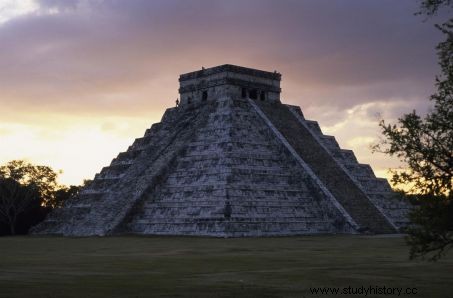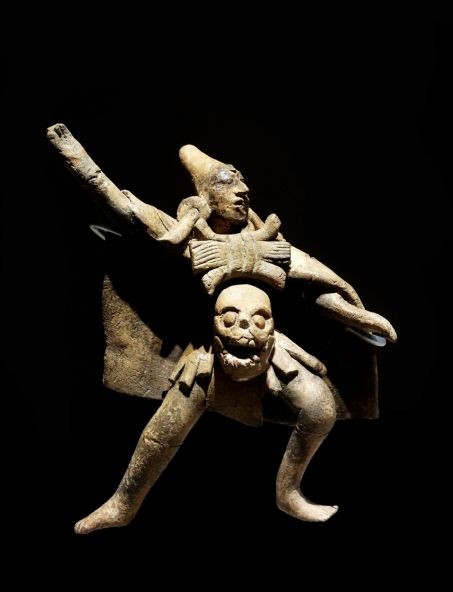New data confirms the role of climate in the demise of the Classic Maya civilization.

Mayan ruins of Xunantinich, in present-day Belize.
The Mayan world fascinates, and the causes of its collapse as well. For nearly three decades, specialists have endeavored to better understand the reasons why this complex society which extended over a territory covering present-day Mexico, Guatemala, Belize and Honduras with its imposing cities with colossal step pyramids , such as Tikal (Guatemala) or Calakmul (Mexico) suddenly began to collapse. Among the most cited tangible hypotheses, changes in environmental conditions figure prominently. In particular, a weakening due to repeated episodes of drought over several years. And these climate changes correlated with socio-political transformations have just been clarified by a group of researchers from the University of Cambridge (United Kingdom) and the University of Florida (United States).
Twilight of a civilization. The Pyramid of Kukulkan (El Castillo) at the Mayan site of Chichen Itza in the Yucatan Peninsula, Mexico. ©Frédéric Soreau /Photononshop/AFP
In a study published in the journal Science , these scientists explain how, using geochemical methods, they were able to detail these phases of disruption. To do this, they analyzed and measured the isotopes of water trapped in crystals of gypsum (hydrated calcium sulfate) extracted from the sediments of Lake Chichancanab, in the Yucatan Peninsula, Mexico. From these results, they were able to determine the levels of precipitation, humidity and drought that had occurred between 700 and 1000 CE. Those that led to the gradual abandonment of the great Mayan cities. They found that annual rainfall decreased by an average of 41% to 54% during these cycles, and up to 70% during droughts. The collapse of the Classic Maya civilization of the Lowlands was indeed a victim of these climatic upheavals, confirming a series of hypotheses put forward since the 1990s, including by David A. Hoddell, one of the signatories of the article of Science . But how did it actually happen? Over the centuries, a political system was established among the Mayas based on incessant rivalries and conflicts between the main cities (see box ).
Figurine representing a Mayan warrior. ©Ann Ronan Picture Library / Photo 12 /AFP
The real competitions of prestige - to possess the highest pyramids, or the most richly decorated - have led to an increase in wars, as much as an overexploitation of the natural environment. In this context of weakening, the succession of extreme droughts quickly affected access to water. Both for home consumption and agriculture. The cultivation of corn, the basis of the Mayan diet, depended essentially on the abundance of the rainy season. However, the impact of these rainless years was not the same across the country. Populations in the north, less dependent on seasonal rains due to their access to groundwater, were spared a time.
The Collapse of the Classic Maya Civilization
Around 750, classical Maya society, then at its peak, imploded. The urban centers and their grandiose buildings were abandoned. Around the X
th
century, the Mayan cities that dotted the center and south of the Yucatan peninsula were emptied of their inhabitants. This was the case of the majestic Tikal. When the Spanish conquistadors trod the ground of Central America, at the beginning of the XVI
th
century, they only discovered ruins but were impressed by the monumental remains they came across. However, the Mayans encountered were no longer the occupants of the vast cities. There were only villages left headed by small caciques . The collapse of the Classic Maya civilization—that is, the disappearance of most cities between 800 and 900 CE—preceded what was later called the "post-classic collapse". ", with the abandonment of the last two pre-Hispanic Maya cities, Chichen Itza, in 1221, and Mayapan, in 1450. Totally deserted, most of the Maya cities were swallowed up by the forest.


